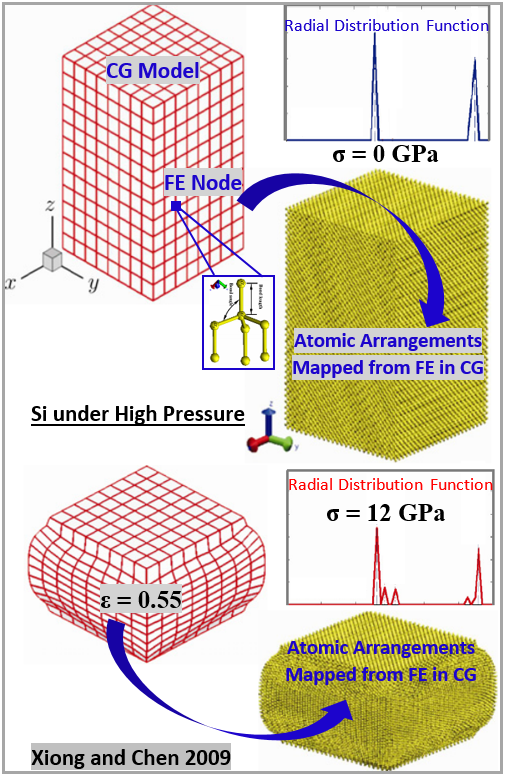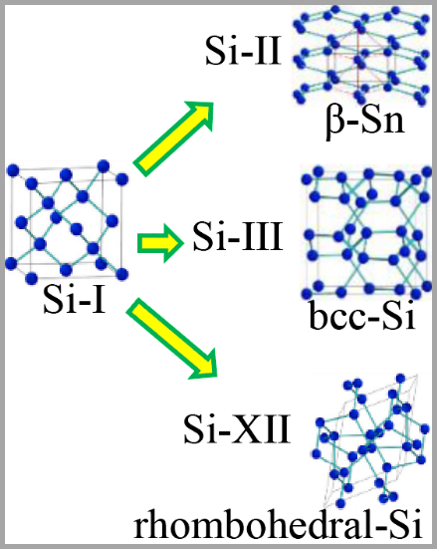Research Areas:
Link Atomistic to Continuum
[Read more...]
CG Simulation of Dislocations
[Read more...]
Multiscale Thermal Transport
[Read more...]
Dislocation-Interface Interactions
[Read more...]
Bio-inspired Composites
[Read more...]
Materials under Irradiations
[Read more...]
Brittle-to-Ductile Fracture
[Read more...]
High-pressure Phase Transitions
Nanostructured Ceramics
[Read more...]

Multiphase materials under mechanical loadings undergo phase transformations (PTs) in which the materials transform from a more symmetric phase to a less symmetric phase. Material displays a variety of microstructures from the atomic to the microscale during the process of PTs. As such, the notion of multiscale modeling of PTs in materials arises quite naturally. We developed the coarse-grained (CG) atomistic method to faithfully reproduce the intertwined nature of multiple length scales involved in PTs. In this method, a multiphase material body is considered as a continuous collection of deformable primitive lattice cells, in which a group of atoms and the crystal structure are embedded. Then the route to coarse-graining is pursued through a multiscale formulation of the dynamics of atomistic system. For example, in the CG model of diamond-Si as shown above, each finite element (FE) node contains a group of Si atoms arranged in a diamond crystal structure. When an uniaxial compressive stress was applied and increased to ~12GPa, the FE mesh deformation from our CG simulations showed that the specimen was deformed at a large strain of ~0.55. Since the atomistic information was built into the CG model, the atomic arrangements was able to be mapped from the deformed FE mesh. Then a radial distribution function (RDF) analysis was performed. RDF results confirmed that, with a significantly less number of degree-of-freedom than that in molecular dynamics, the CG model predicted the critical pressure for the PTs from diamond-Si to β-Sn in Si under a high pressure.

In addition, PTs in many materials are also accompanied by dislocation activities. In such materials, the dynamics of PTs and dislocations are always inherently coupled. For example, indentation and scratching induce amorphization, PTs, and also dislocation-mediated slip bands in silicon. In the amorphous layers, multiple phases such as Si-II, Si-III and Si-XII phases ((figures on the left) will nucleate and grow. Such a complexity of the coupled dynamics between PTs and dislocations spans multiple length scales and necessitates the further development of our multiscale modeling framwork sponsored by NSF CMMI-1536925.
References:
- Xiong, L. and Chen, Y., 2009. Coarse-grained simulations of single-crystal silicon, Modelling Simul. Mater. Sci. Eng. 17, 035002:1-17.
- Xiong, L. and Chen, Y., 2012. Coarse-grained atomistic modeling and simulation of inelastic material behavior, Acta Mechanica Solida Sinica, 25, 3, 244-261. doi:10.1016/S0894-9166(12)60023-8
